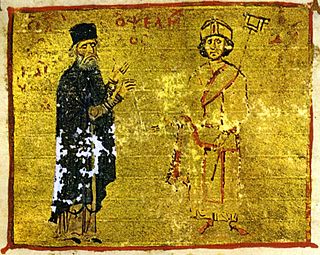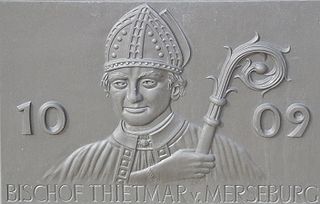 W
WAdam of Bremen was a German medieval chronicler. He lived and worked in the second half of the eleventh century. Adam is most famous for his chronicle Gesta Hammaburgensis ecclesiae pontificum. He was "one of the foremost historians and early ethnographers of the medieval period".
 W
WAdémar de Chabannes was an eleventh-century French monk, a historian, a musical composer and a successful literary forger.
 W
WAhimaaz ben Paltiel was a Graeco-Italian liturgical poet and author of a family chronicle. Very little is known about his life. He came of a family some of whose members are well known in Jewish literature as scholars and poets; for example, Shefatya ben Amitai, Hananiel ben Amittai, and his nephew Amittai ben Shephatiah. Ahimaaz had two sons, Paltiel and Samuel. The family tree of this clan is given by Ahimaaz in his Chronicle:
 W
WAbu Rayhan al-Biruni was an Iranian scholar and polymath during the Islamic Golden Age. He has been variously called as the "founder of Indology", "Father of Comparative Religion", "Father of modern geodesy", and the first anthropologist.
 W
WEadmer or Edmer was an English historian, theologian, and ecclesiastic. He is known for being a contemporary biographer of his archbishop and companion, Saint Anselm, in his Vita Anselmi, and for his Historia novorum in Anglia, which presents the public face of Anselm. Eadmer's history is written to support the primacy of Canterbury over York, a central concern for Anselm.
 W
WGregory of Catino was a monk of the Abbey of Farfa and "one of the most accomplished monastic historians of his age." Gregory died shortly after 1130, possibly in 1133.
 W
WBlessed Hermann of Reichenau, also known by other names, was an 11th-century Benedictine monk and scholar. He composed works on history, music theory, mathematics, and astronomy, as well as many hymns. He has traditionally been credited with the composition of "Salve Regina", "Veni Sancte Spiritus", and "Alma Redemptoris Mater", although these attributions are sometimes questioned. His cultus and beatification were confirmed by the Roman Catholic Church in 1863.
 W
WMichael Psellos or Psellus was a Byzantine Greek monk, savant, writer, philosopher, politician and historian. He was born in 1017 or 1018, and is believed to have died in 1078, although it has also been maintained that he remained alive until 1096.
 W
WSampiro was a Leonese cleric, politician, and intellectual, one of the earliest chroniclers of post-conquest Spain known by name. He was also the Bishop of Astorga from 1034 or 1035 until his death.
 W
WJohn Skylitzes, commonly Latinized as Ioannes Scylitzes, was a Greek historian of the late 11th century.
 W
WThietmar, Prince-Bishop of Merseburg from 1009 until his death, was an important chronicler recording the reigns of German kings and Holy Roman Emperors of the Ottonian (Saxon) dynasty. Two of Thietmar's great-grandfathers, both referred to as Liuthar, were the Saxon nobles Lothar II, Count of Stade, and Lothar I, Count of Walbeck. They were both killed fighting the Slavs at the Battle of Lenzen.
 W
WWilliam of Jumièges was a contemporary of the events of 1066, and one of the earliest writers on the subject of the Norman conquest of England. He is himself a shadowy figure, only known by his dedicatory letter to William the Conqueror as a monk of Jumièges. Since he also mentions that he was an eyewitness of some events from the reign of Duke Richard III (1026-7), it seems reasonable to assume that he was born some time about the year 1000. He probably entered the monastery during the first quarter of the eleventh century and received his education from Thierry de Mathonville. According to Orderic Vitalis, William's nickname was "Calculus". The meaning behind this nickname is unknown. His death, after 1070, is unrecorded. He was a Norman writing from a Norman point of view. Although only a monk with evidently no military training, he wrote with pride in the accomplishments of his people.
 W
WWipo of Burgundy was a priest and writer. He was a chaplain to the Holy Roman Emperor Conrad II and may have acted as a tutor to his son Henry III, to whom he dedicated a number of works. His biography of Conrad II, entitled Gesta Chuonradi II imperatoris, is a key source for Conrad's reign.